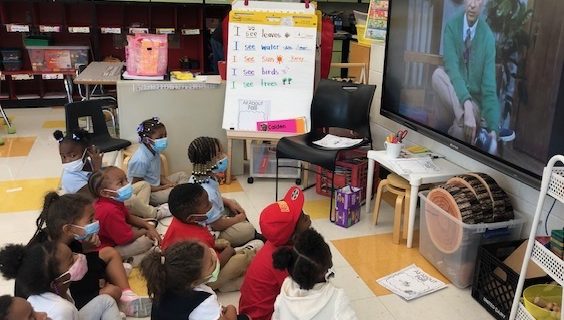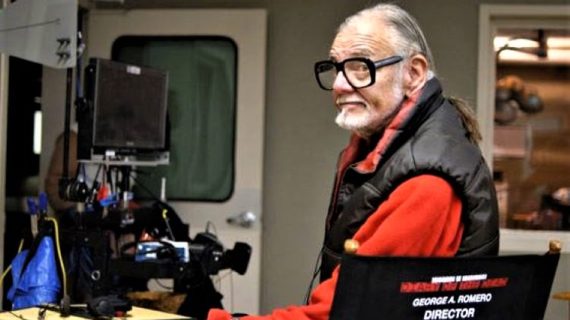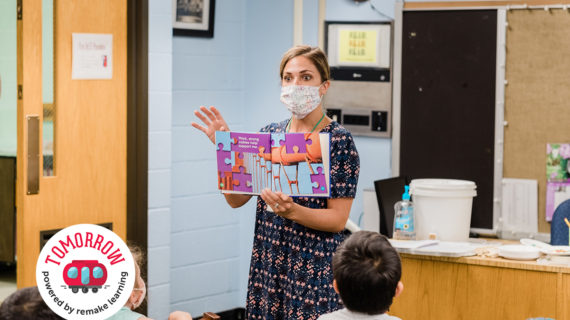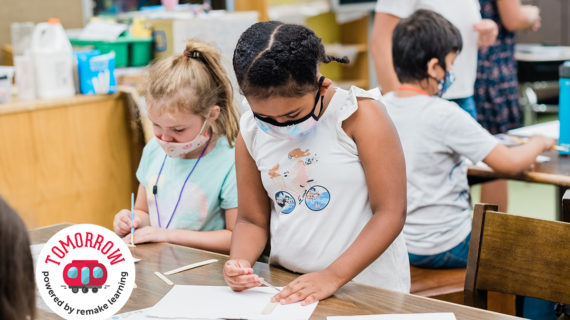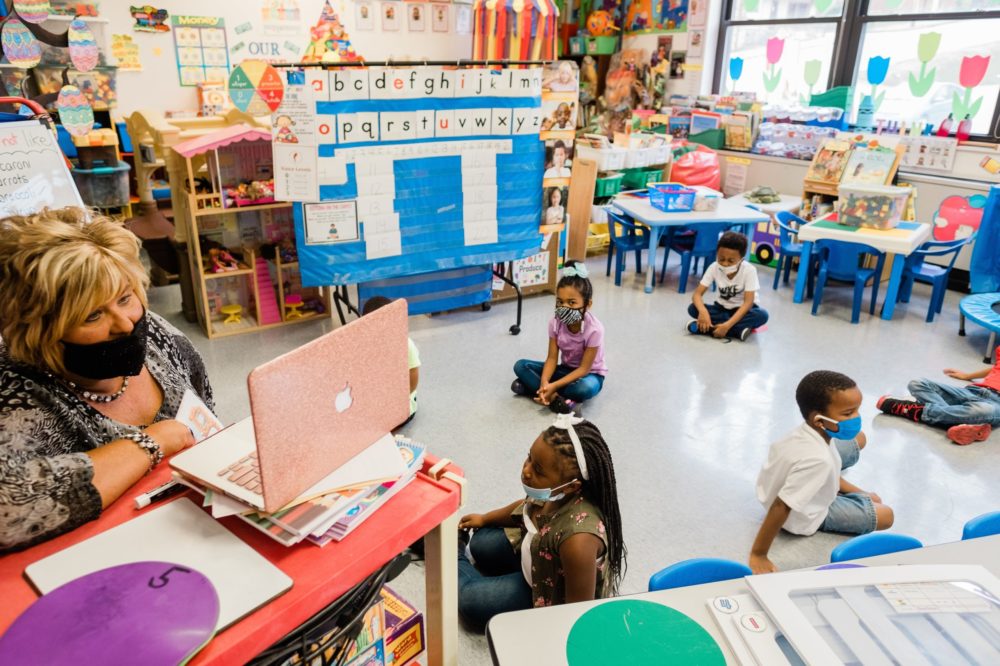
That sound you hear? It’s silos breaking down in Pittsburgh’s education community.
Photo above courtesy of Remake Learning.
Melissa Unger and Anna Blake are both STEAM teachers in suburban Pittsburgh. They’ve never worked in the same district. Unger teaches at South Fayette. Blake is 30 miles away at Elizabeth Forward. But while participating in groups for STEAM teachers in the Pittsburgh region, they became friends.
When the pandemic began, they reached out to one another: “Anna and I were both kind of looking for a way to keep connected with our students,” Unger remembers.
In the pre-pandemic world, teachers like these were generally expected to solve problems within their own buildings. But school buildings were closed. Normal solutions were impossible. That meant wildly creative ideas were suddenly fair game, and new collaboration between schools began to grow.
So Blake and Unger dreamed up the Pittsburgh STEAM Station, a free library of YouTube videos offering hands-on, low-tech STEAM lessons that students could do with basic materials they could find at home. They would produce these videos together from their homes and share them for free with anyone from any district who wanted to tune in.
Word quickly spread. Soon other teachers were offering to pitch in and contribute videos of their own.
“It turned out that a lot of other teachers in the area were also kind of fearful of the same things we were, like losing connection with our students,” Unger says. “So they were really eager to take part.”
Creative Collaboration
A total of 34 lessons were joyfully delivered by Blake, Unger and a slew of teachers from different districts, all filming from home. These lessons have inspired a full STEAM Day at Blake’s school, and the team has produced a paperback book of the collected lessons that’s now being used by educators in 22 states.
The project—launched on an almost nonexistent budget—became a vivid example of the fruitful collaborations that are possible when silos are broken down.
In fact, we’re seeing that even within a single district, breaking down silos can change children’s lives.
Inspiring Role Models
More than a year before the pandemic began, the STEAM teachers at Hampton Middle School were grappling with a longstanding, nationwide problem: For decades, data has clearly shown that girls tend to move away from math and science classes as they get older.
“We came up with an idea called the Talbot STEAM Girls, and we offered workshops during tutorial periods for those girls that were interested in learning about engineering, learning about technology, and learning about math and that whole field of STEM,” says Gwen Cohen, an enrichment facilitator and instructional coach at Hampton Middle School.
This project took on a new dimension when a Hampton High School student named Danielle Sutterlin got involved in an “engineering ambassador” program through the National Academy of Engineering.
“The goal of the program was for her to develop an event for the girls at the middle school,” says Cohen, who agreed to serve as Sutterlin’s advisor.
Even with the pandemic well underway, Sutterlin and Cohen managed to plan a day when middle school girls at Hampton would meet with the high schooler and draw inspiration from her love of engineering and her plans for a successful engineering career. Sutterlin even recruited working engineers to attend.
The school was on a hybrid schedule at this point, so some girls were on Zoom working from packages of materials that Sutterlin had prepared for them while others were in-person at the middle school. But the entire group of about 20 girls was clearly excited to talk and connect with this high schooler who is planning a career as an engineer.
“It was just motivating and energizing for the girls,” Cohen says, and it inspired the middle schoolers to request more visits from high schoolers.
“Danielle is actually coming back this year to do a different workshop with us,” says Dr. Melissa Survinski, enrichment facilitator for Hampton’s middle school and high school. “So we’re going to keep building that relationship. And we had another high school student who came down and did something similar, but computer-science focused.”
The middle school girls want that student to come back as a guest teacher, even though she’s now in college, says Survinski. And the collaboration has grown beyond math and science to another field that’s traditionally employed more men than women: the law.
Two Hampton high school girls have begun working over Zoom with middle school girls to discuss law classes and law careers, and they’ve come to the middle school to conduct a mock trial.
Growing This Process
These projects happened with little or no funding. The benefits mainly came from a shift in mindset. But what if funding were available to make further progress on collaborations within and between districts?
The recent publication “Remaking Tomorrow: What Comes Next?” made this suggestion: What if the state were to “expand the PA Smart Grants model to support research and development of scalable learning innovations across clusters of schools and partner organizations?”
This wouldn’t have to be a huge investment, as these projects demonstrate. Even small amounts of seed money could bring big dividends. Because in the end, these collaborations are about people.
Technology made The Pittsburgh STEAM Station collaboration possible. And it’s been vital to the Hampton collaboration as well, with high students Zooming in for lessons with middle schoolers. But in both cases, face-to-face connection and relationships play a vital role.
“One of the things that I learned from this experience,” Unger says, “is just how strong of an educator community we have in Pittsburgh, and how much excitement there is around STEAM and maker education and innovation.”
As her Pittsburgh STEAM Station project has grown, Unger has seen a new sense of community grow among the region’s educators. People who previously would have said a warm hello at a STEAM meetup once per semester and then not spoken again until the next event are now communicating regularly, she says.
Thanks to their collaboration, “everybody is linked together in a way I didn’t expect,” Unger says. “It’s much more of a community.”
This article is part of a series for “Tomorrow” powered by Remake Learning. “Tomorrow” explores – through virtual events, grantmaking, and storytelling – what we can do today to make tomorrow a more promising place for all learners. Follow along or share your hopes for today’s young people using the hashtag #RemakeTomorrow and tagging @RemakeLearning. Learn more about Remake Learning here. And read more “Tomorrow” articles published on Kidsburgh.
